Taro is a starchy root vegetable that grows in tropical climates. It has been eaten for thousands of years and was one of the most important crops to ancient Hawaiians.
It’s also known as eddo, dasheen, or arum. It has a starchy texture and can be boiled, fried, baked, or steamed like potatoes.
There are many varieties, but taro is usually white or purple on the outside with a yellowish-white flesh inside.
So, I did some research and found out that Taro is usually served as a side dish with either fish or meat for dinner in many different Asian countries. It can also be made into soup and used as a dessert.
If you want to know what does taro taste like then this blog post will answer your question.
What is Taro?

Taro is a popular food in the Pacific Islands. It is also known as Dasheen, Eddo, or Colocasia esculenta.
The plant can grow up to 3 meters high and has large leaves that are green on the top side of its stem. The roots are harvested for consumption when they reach about 1 meter in length.
They can grow in wet soil and are a good addition to rice fields because the plants help prevent soil erosion.
Taro is traditionally planted in small clusters and sold by weight at markets, where they are used for cooking curries or as an ingredient of many dishes around Southeast Asia, especially Thai food.
The tubers are often cooked and served with coconut milk, but they can also be fermented to make taro chips.
The root is used to make poi, a Hawaiian dish made from mashed boiled taro roots with water or milk added for consistency.
Benefits of Eating Taro
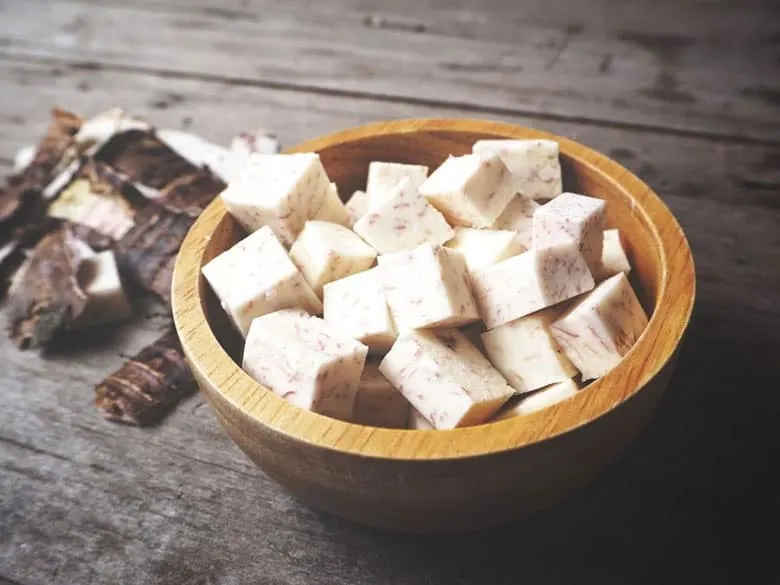
Taro contains calcium, which helps with strong bones and teeth.
Taro also contains vitamin C, which is important for a healthy immune system. Eating taro can help strengthen your heart muscle because it has potassium in high amounts.
It is rich in fiber, which helps lower cholesterol and reduces the risk of heart disease. It is also high in complex carbohydrates, which provide energy for physical activity during exercise or sports events.
The leaves of this plant are used to make taro tea, which has a slightly sweet taste.
The green leaves and stems are edible too. They can be used as an herbal remedy for coughs and other respiratory issues. They have an earthy taste and can be used in salads or stir-fries.
What Does Taro Taste Like? Does Taro Taste Good?
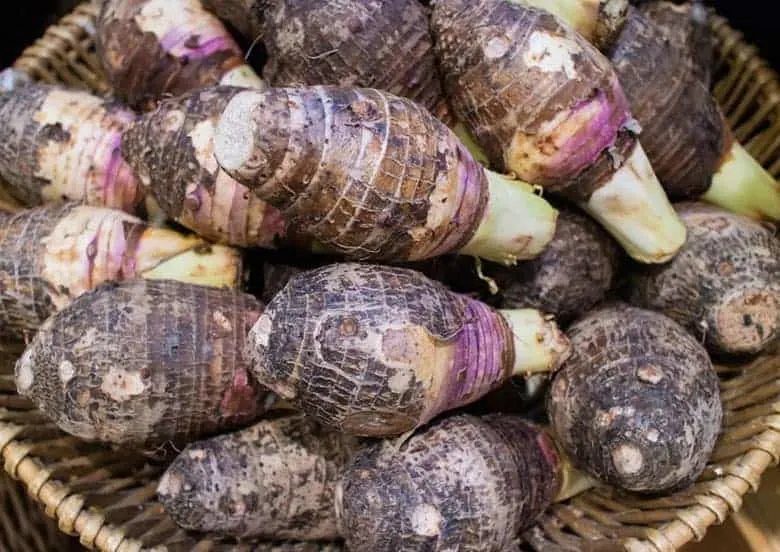
Taro is a tuberous root from the Araceae family that tastes like a potato or yam. It is a starchy vegetable that can be boiled, mashed, or fried.
The flavor can be described as nutty, earthy, sweet with hints of vanilla or coconut. It can be used as an ingredient or side dish for many different types of cuisine.
In some countries, it’s eaten raw in salads but this should not be done because the leaves contain calcium oxalate crystals which could irritate your mouth.
The leaves are often cooked with coconut milk to make taro leaf curry, which is popular in Sri Lanka, India, and other parts of Asia.
In the Caribbean, taro root is boiled and mashed into a paste called dalo (or “dali”), which resembles polenta.
The best way to cook taro is by boiling it in water. This will take between 30-45 minutes to cook, depending on the size of your taters and how soft you want them.
Does Taro Taste like Coconut?
First, Coconut is a drupe, while Taro is a root vegetable. They do have similar nutritional profiles such as high in fiber and low-calorie, but they taste very different.
Coconut has a subtle sweetness with notes of nuttiness; taro can be described as earthy or starchy with mild sweetness and hints of nuttiness.
How to Cook and Eat Taro?
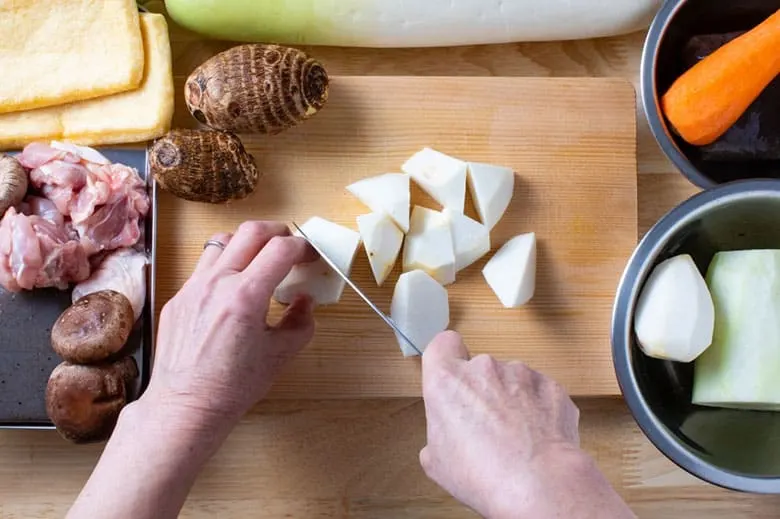
Taro is a root vegetable that can be eaten raw or cooked. There are several ways to serve taro. One way is to boil, mash and enjoy it as a dalo dish.
Another more traditional method of cooking taro root would be by boiling until soft then frying in coconut oil or butter with diced onions for flavorings such as Tumeric paste.
You can also grate taro and use it in your favorite baked goods such as bread, waffles, or pancakes. Toss grated cylinders of the tuber with flour to make a simple dough for fried dumplings.
If you want to fry taro, cut the taters into wedges and soak them in cold water for an hour so they don’t turn brown.
Toss with flour or corn starch then fry until golden-brown In this case we recommend using a ratio of two parts oil to one part butter.
Because coconut is more likely than other oils such as canola not to break down at high temperatures as vegetable shortening does.
Conclusion
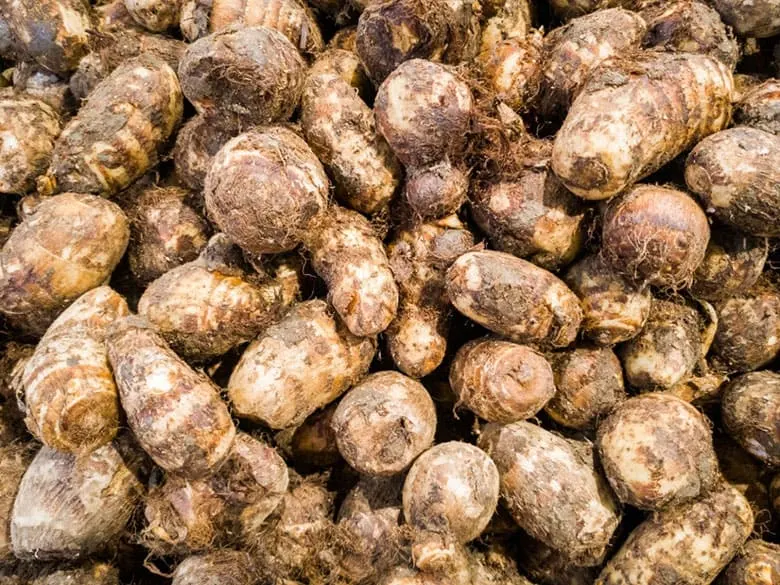
In conclusion, taro is a healthy, delicious, and versatile vegetable that you should try. Taro also contains significant amounts of vitamins A and C as well as potassium and calcium.
In some countries, taro is a staple food crop that provides an important source of carbohydrates to those who consume it regularly.
So give this versatile vegetable a try and see for yourself what all the fuss is about. You won’t regret it!
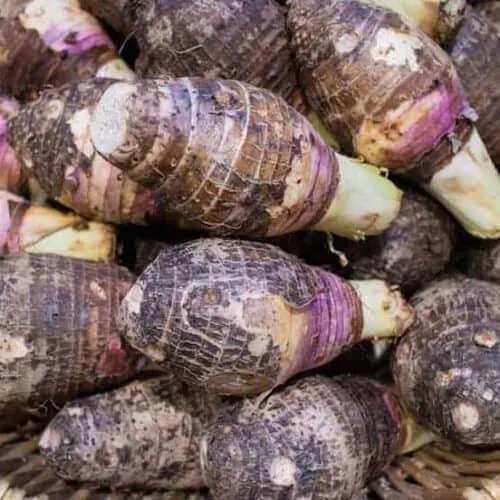
What Does Taro Taste Like? Does Taro Taste Good?
Ingredients
- Taro
- Ingredients from your favorite recipes
Instructions
- Depending on the recipes you choose, the taste can vastly differ.
- For authentic results, it is important to choose a recipe that will highlight the original flavor.
- Have fun experimenting with different recipes and taste tests!
